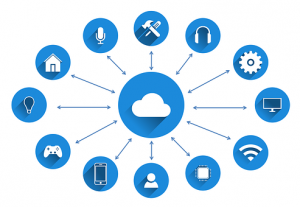
We’re all busy buzzing around, but never too busy to take your call or respond to your request!
 President Armen Stein has earned the Microsoft MVP Award every year since 2006. That tells you something about his passion for technology.
President Armen Stein has earned the Microsoft MVP Award every year since 2006. That tells you something about his passion for technology.
Successfully Working At Home
While we are all enjoying the opportunity to work from our homes, there were some revelations. One team member quickly learned that being home all the time made her a little stir-crazy. With the newfound 3 hours in a day (her total commute time), she learned that she had time to tackle new activities, including dancing. Another member began to feel a little isolated from human contact so she started working out at a local gym. Looking for tips on working from home? Check this out!
Going Virtual

A few months ago we moved out of our physical office and went completely virtual! No, that doesn’t mean that we are all CGI characters (we are still real humans), but it does mean that we no longer gather to work at a permanent office.
Why did we virtualize?
Over time, I saw that our office was more and more sparsely populated – people were already choosing to work from home. Our commutes ranged from 25 minutes to 90 minutes each way – and that was on normal days. Renting an office space that wasn’t fully used started to seem like a waste of money.
At the same time, technology has been getting better. One by one, we transferred functions from our expensive, aging server to Microsoft’s Azure cloud or virtual servers in a data center. We ported our phone numbers to RingCentral, which allows us to make and receive calls from any of our devices, and offers many other features that our old digital phone system couldn’t match. High-definition webcams and good headsets give us smooth web conferencing. For physical mail and packages, we rented space at a nearby Regus location, where we can also use offices and conference rooms. Eventually, there was nothing tying us to the office anymore.
The Challenges
Presence isn’t obvious. We can’t just look into an office to see if someone is there. Instead, we use Microsoft Teams (part of Office 365) to see visual red or green indicators showing whether each person is at their PC and available.
“Dropping in” isn’t so natural. When you’re working at home, you can’t lean into someone’s office and say “hey, got a minute?” Instead, we’re learning to drop in on each other using video web meetings.
Not everyone has a home office space. We sent home or purchased office furniture and equipment for anyone who needed it. For employees with limited space at home, we pay for time at Regus offices or co-working spaces.
The need for connection. We like to work together! In addition to video web meetings, every month we get together over a potluck lunch and review movies. We’ll still have pinball tournaments at my house. And sometimes two or more people get together at a Regus office just to work in the same room.
Measuring performance. Many managers worry about understanding what their team is doing if they can’t see them. In our case, that hasn’t been a problem, since we already had project management meetings and production measurements in place. I’d say that if you need to see people at their desks to know they’re working, you’ve already got a bigger problem.
The Benefits
My team has been reporting big increases in free time and flexibility. They love not spending so many hours on the road. Some of them are reconnecting with friends and doing new activities. I think working virtually is becoming a distinct benefit of working at J Street. And I love not paying rent for an underutilized office! A few months ago we moved out of our physical office and went completely virtual! No, that doesn’t mean that we are all CGI characters (we are still real humans), but it does mean that we no longer gather to work at a permanent office.
Did you know we build remote workforce applications too? Contact us today for a free consultation!


